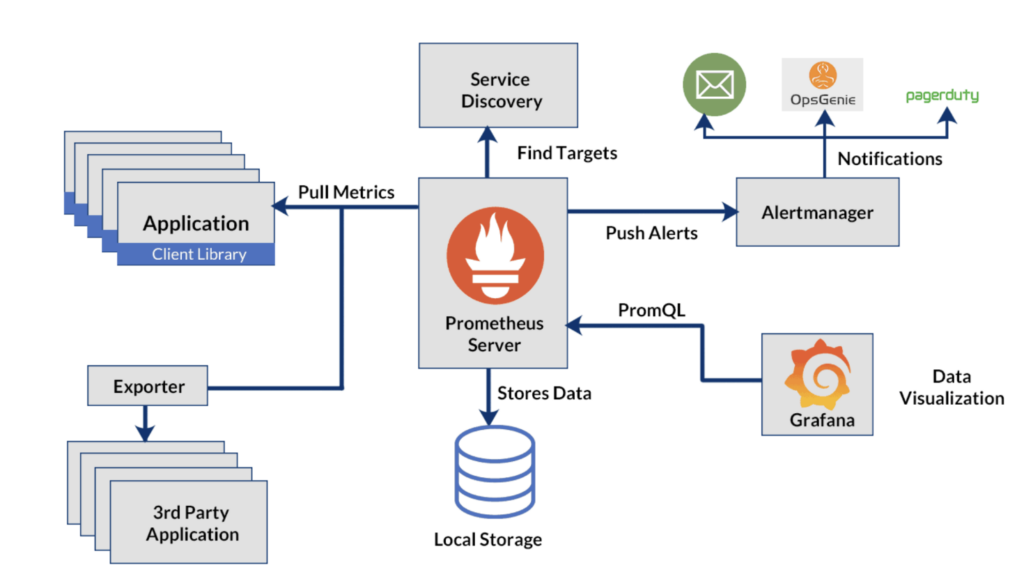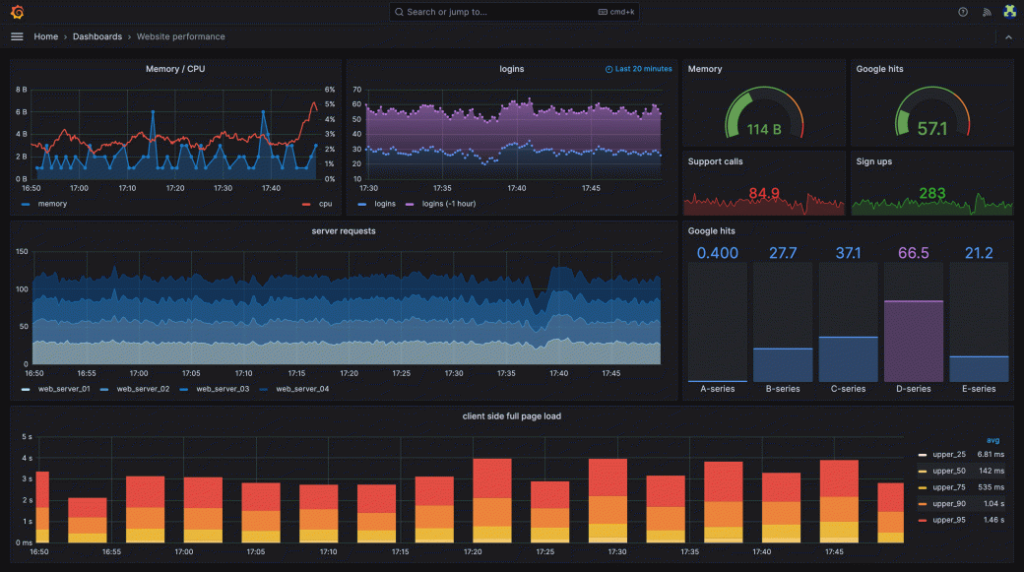A robust monitoring and alerting strategy is a cornerstone of a successful DevOps workflow.
It not only ensures system reliability and performance but also enables teams to proactively address issues before they impact the end users.
A successful monitoring and alerting strategy combines appropriate tools, metrics, processes, and automation, aligning with the DevOps objective of swiftly deploying software of high quality.
But where do we begin?

Define achievable goals and metrics
Numerous tools are available to assist in scraping the resources we wish to track. However,
without proper configuration, attempting to monitor everything can result in an abundance of ineffective metrics. Let’s begin with the most common configurations and explore the tools that are best suited for these tasks:
- To scrape logs, we require a solution that can observe the log destination and
forward it to a centralized storage. Loki paired with Promtail serves this purpose
efficiently. Loki is designed for horizontal scalability, cost-effectiveness, and easy
setup, making it an ideal choice for aggregating and querying logs from various
sources. Promtail, on the other hand, is an agent which ships the contents of local
logs to a Loki instance, thus facilitating the log collection process.
- For container metrics, such as total restarts, CPU and memory usage, and more,
Prometheus is the go-to solution. It’s particularly powerful for scraping and storing
time-series data. When working with Docker containers, Prometheus can collect
metrics directly from the Docker daemon. Additionally, in a Kubernetes environment,
kube-state-metrics can be used alongside Prometheus. Kube-state-metrics
listens to the Kubernetes API server and generates metrics about the state of the
objects (such as deployments, nodes, and pods), which can then be scraped by
Prometheus for comprehensive monitoring.
- Regarding the underlying infrastructure, metrics related to the physical or virtual
machines, such as CPU, memory, disk, and network utilization, are crucial. This is
where Node Exporter comes into play. Node Exporter is a Prometheus exporter
that collects hardware and OS metrics exposed by *NIX kernels, allowing for detailed
monitoring of the system resources and performance. This tool is essential for
gaining visibility into the operational health of the infrastructure supporting your
applications.
The Prometheus ecosystem, of which the Node Exportor is a part, supports a wide variety of
exporters that can monitor different aspects of your systems, services, and infrastructure.
Each exporter is designed to fetch statistics from a specific source and present them in a
format that Prometheus can scrape and store.
Visual Data Exploration
Once all our resources have been scraped and metrics collected, we can turn our attention
to the visualization and analysis phase, where tools like Grafana play a crucial role.
- Grafana enables us to create dynamic, insightful dashboards that bring our data to life, which can be seen on the image below.
Through its comprehensive support for various data sources like Loki or Prometheus, Grafana allows us to aggregate and visualize metrics, logs, and traces in a coherent and customizable interface.

Instant Notifications with AlertManager
Metrics collected, visualizations configured—yet, we cannot constantly monitor Grafana, as
the sheer volume of information is overwhelming.
Enter Alertmanager, a vital cog in the observability ecosystem, designed to streamline alert management.
It adeptly manages alerts generated by Prometheus, efficiently handling deduplication, grouping, and routing, ensuring that notifications are both meaningful and manageable.
Alertmanager’s integration with a wide array of notification platforms, such as:
- PagerDuty for on-call scheduling,
- Slack for team communication, and
- Discord for community engagement,
ensures that alerts reach the right people through their preferred channels.

Pavol Krajkovic
DevOps Specialist and Consultant



